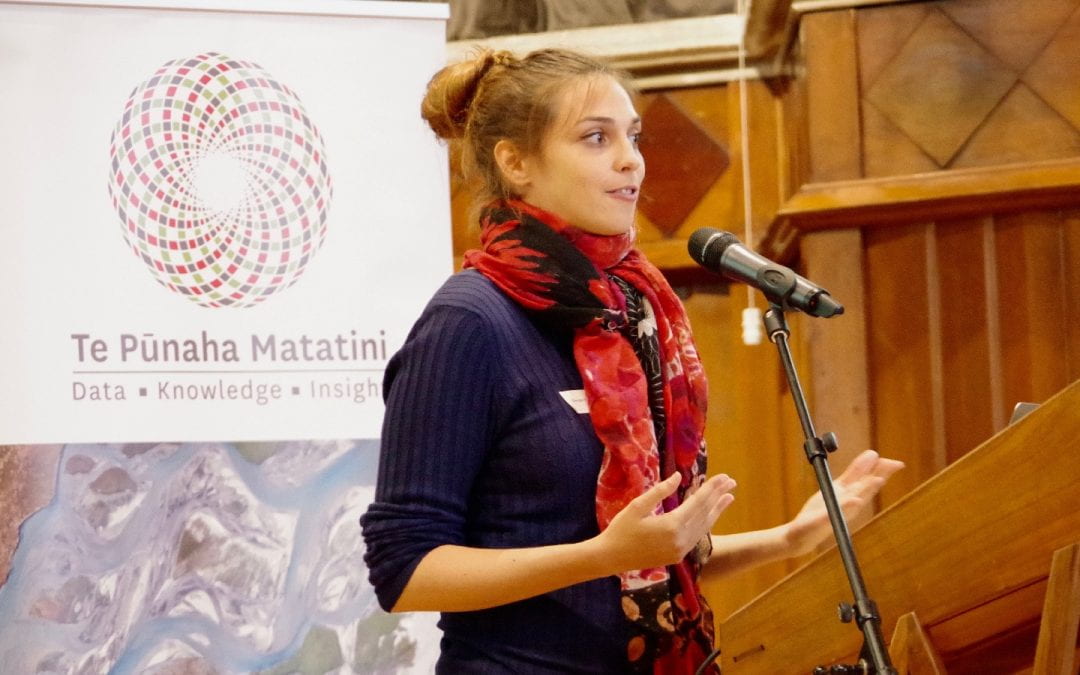Te Pūnaha Matatini researcher Giorgia Vattiato (above) and colleagues, from the School of Mathematics and Statistics at the University of Canterbury, are modelling the effects of individual animal personalities in New Zealand on conservation efforts. The purpose – to answer questions such as why some invasive mammal pests always manage to avoid traps, and what kind of reintroduction measures for Kiwi might help them settle more efficiently.
Enhancing the efficiency of invasive mammal pest trapping
Invasive mammal pests such as stoats, possums and rats represent a major threat to New Zealand’s native birds such as Kiwi. Trapping pests as part of wider eradication efforts has worked well on small offshore islands and fenced-off areas of the mainland. However, a few individual animals always seem to be uncatchable – an issue that has led to a growing need for more robust eradication approaches.
Giorgia’s research looks beyond what we already know about factors that influence the behaviour of animal populations. It is well known, for example, that differences in habitat, predation, food availability, social environment and physiology can all affect animal behaviours (and personalities). Common personality differences include boldness or shyness, activity level, resource selection, sociability, and home range size. These different personalities can affect a population as a whole, but very few population dynamic modelling studies have taken them into consideration.
The study of animal personalities can therefore be seen as an important step towards developing accurate, non-biased models that can better predict the efficiency of different programmes underway in New Zealand that aim to eradicate pests, reintroduce threatened species and protect biodiversity.
This has been the rationale of Giorgia’s research – modelling the effects of individual animal personalities in New Zealand. Together with her Te Pūnaha Matatini supervisors, Dr Rachelle Binny at Manaaki Whenua Landcare Research, Associate Professor Alex James and Professor Michael Plank at the University of Canterbury, plus Associate Professor Isabel Castro at Massey University, she has conducted two different types of projects as part of her PhD study.
The first project involves modelling different scenarios of heterogeneity in a pest population, where individual animals are assigned a different probability of interacting with a newly-found trap (their ‘trapability’). Running simulations of two different pest populations – homogenous (all individuals had the same trapability) and heterogenous (individuals have varying levels of trapability), revealed that it takes much longer to eradicate the latter population than the former.
“One of the outputs of our model is the time that you need to wait to be sure that your population has been completely eradicated,” explained Giorgia. “Usually what a pest manager would do is wait until a number of consecutive nights when there have been no captures. After a certain number of nights, they would say ‘okay, we’re 95% sure that we’ve eradicated the population.’ So what we’ve done is simulated this number of nights to have 95% probability of eradication in different scenarios, and we’ve looked at how long we have to wait. So this is one way our model can be used.”
“The model can be used to predict when to change eradication approaches. At one point the curves start to flatten and tail off as those last few very trap-shy individuals keep evading capture. So the flattening curve could inform a pest manager when to switch to a more intensive eradication mode – one that may be more expensive than the first part of the eradication.”
Different Kiwi behave and react differently in response to being moved
The second project the team are working on aims to identify possible differences in the behaviour of Kiwi populations on Motuarohia Island in the Bay of Islands and Ponui Island in the Hauraki Gulf. One of Giorgia’s supervisors on this project, Isabel Castro, had acquired data from previous years when capturing and recording information about the Kiwi population on Ponui Island.
“Isabel could see how different the birds were – some were very friendly, some were not,” said Giorgia. “But nobody had actually ever looked at the numbers behind that. And so I went with her this year and we did a few experiments. We filmed the Kiwi right after capture, under different circumstances – holding them upside down, looking at them in the eye, whilst also recording their heart beat and respiratory rate, to look for differences between birds. They were so different. Some of them would just fall asleep in your arms, and others would never stop struggling. Some of them would even growl or snap their beak.”
Their findings, yet to be published, are expected to be useful for guiding relocation efforts. “Just knowing that the birds have different personalities is something that conservation managers will want to know, especially for situations such as translocations of birds,” explained Giorgia.


